In January 2022, I wanted to go somewhere where I imagined sunshine. Originally I planned to go to a Greek island, but after some talks with a couple of people who either used to live there or travelled there precisely in January – I gave up. Still, I was very determined to go somewhere and by chance I got to Jordan. When I stumbled across a plane ticket at extremely favourable price, there was no longer any dilemma. Admittedly, coronavirus was still very much active in Europe, Serbia included. But I thought I had done everything that was up to me to protect myself and the tests also showed I was fine, i.e., I was negative, so there was no longer any reason why I would not go to this very interesting country.
I must admit that in the past Jordan has always had the Petra link in my head. A visit to this site was certainly one of the priorities, but very soon I have made a map of Jordan for myself with marked interesting sites that I would like to visit. I have also made a travel plan with an approximate schedule of my visits and when doing so I’ve realised I would not have a lot of free time, since Jordan has ample wealth of monuments of culture that are a “must.” In the end, here is the map showing what I have visited:
To start with, one late January evening I left Belgrade by mini-bus heading for Budapest, Hungary, i.e., for the airport in Budapest. My early morning flight to Amman was due to depart precisely from there. It was all, needless to say, gruesome, but I survived, dozing off often, so I reached the airport in Amman in a comparatively decent state.
Still, before landing, I was awake enough to take a few photos through an airplane window. One should particularly pay attention to the following photo. There are numerous elevations and valleys, and most parts of Jordan that I visited had this type of configuration. This will prove to be pivotal for my stay, since I had impression of constantly going up and down, which was not really always so.
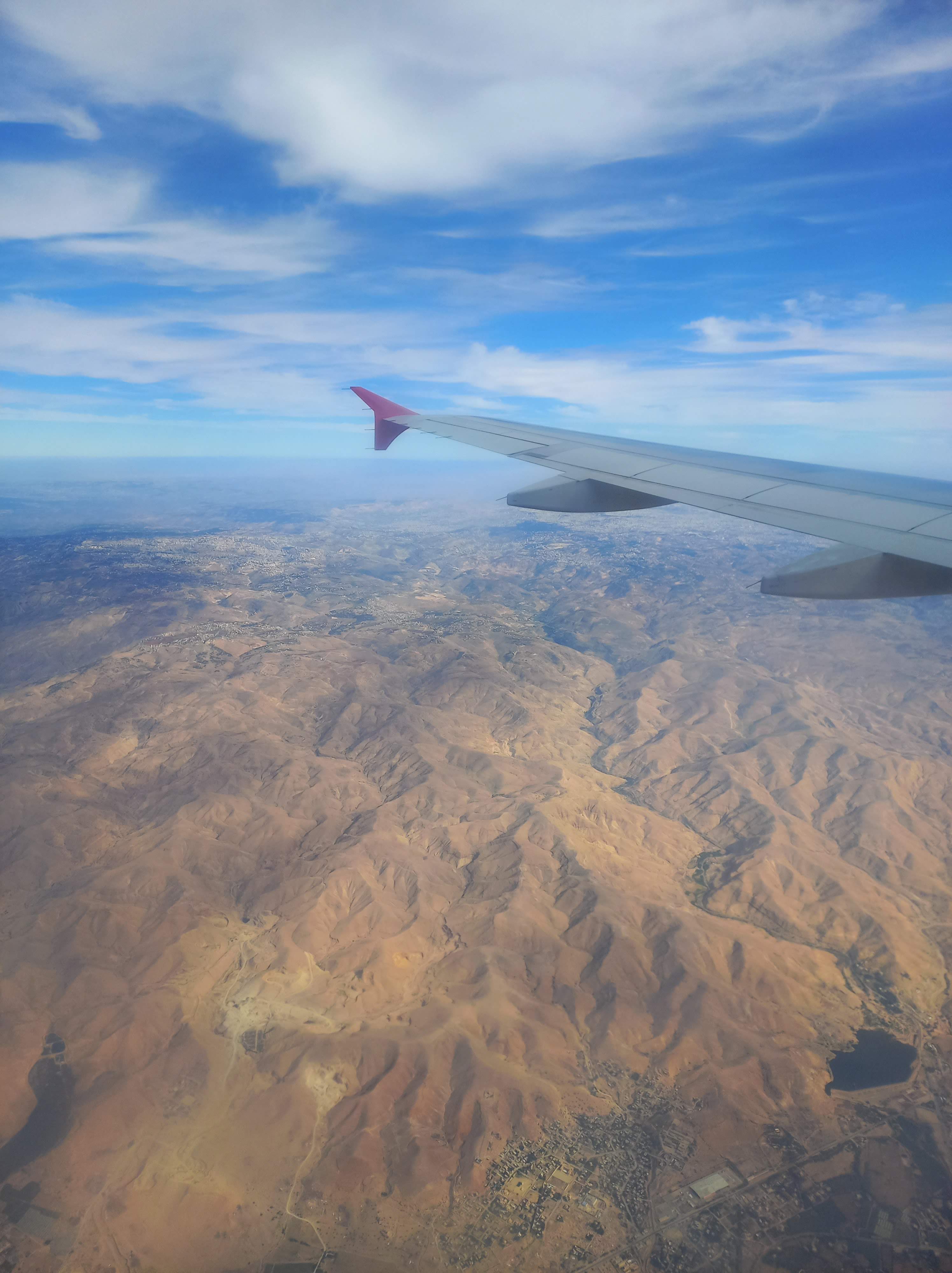 Western parts of Jordan
Western parts of Jordan
Before landing at the international airport in Amman, the plane made a circle above the desert parts of the country and the colours there were amazing. I was really looking forwards to my stay in Jordan!
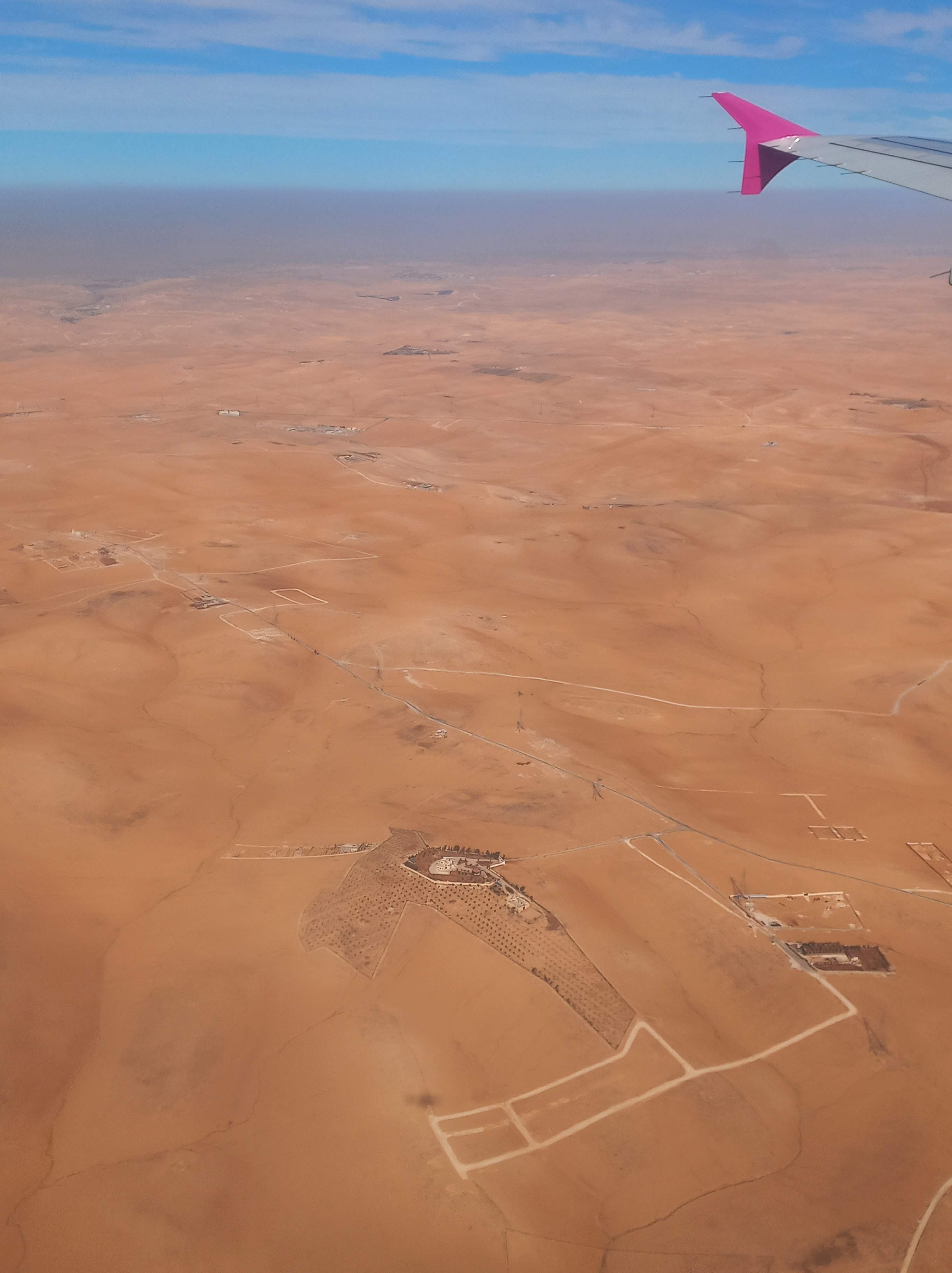 Desert part of Jordan
Desert part of Jordan
By the time I had finished with the border formalities, which this time also included a PCR test swab, my bag was already waiting, as well as the driver whom I had arranged with the hotel. Everything was going smoothly. Was it indeed?
Already back at the beginning of December of the previous year I had ordered a guidebook on internet and even though the company said the delivery would be in three weeks at the latest, the guidebook did not arrive even after 5 weeks. I must admit I was not delighted at all, but there was nothing I could do about it. I even tried to get the guidebook at the airports I was passing through, but I couldn’t find it. That’s why as soon as I settled at the hotel, I had to try to find the guidebook on the spot.
First I started on foot locally, which was not that bad since I was getting to know the downtown area (the older part of the city) where I was staying anyway, although, as it would turn out, I did not find the guidebook there. The exceptionally kind receptionist gave me the instructions as to which way to follow in order to get to a bookstore with foreign books that I had previously looked up on the internet. What he had failed to mention, which was something I faced right away, were the steep slopes in Amman. My hotel was in a flat street that extended along the bottom of the, so to speak, valley, which was surrounded by elevations with steep slopes. I had to climb, no question about it. The choice was either the zigzag streets that were regardless of the zigzagging still very steep or to cut across using stairs. I combined. Thus I came across a staircase that was undergoing renovation and I even encountered a couple of young girls who took advantage of my presence and asked me to take a poll asking me what I was thinking about their local project.
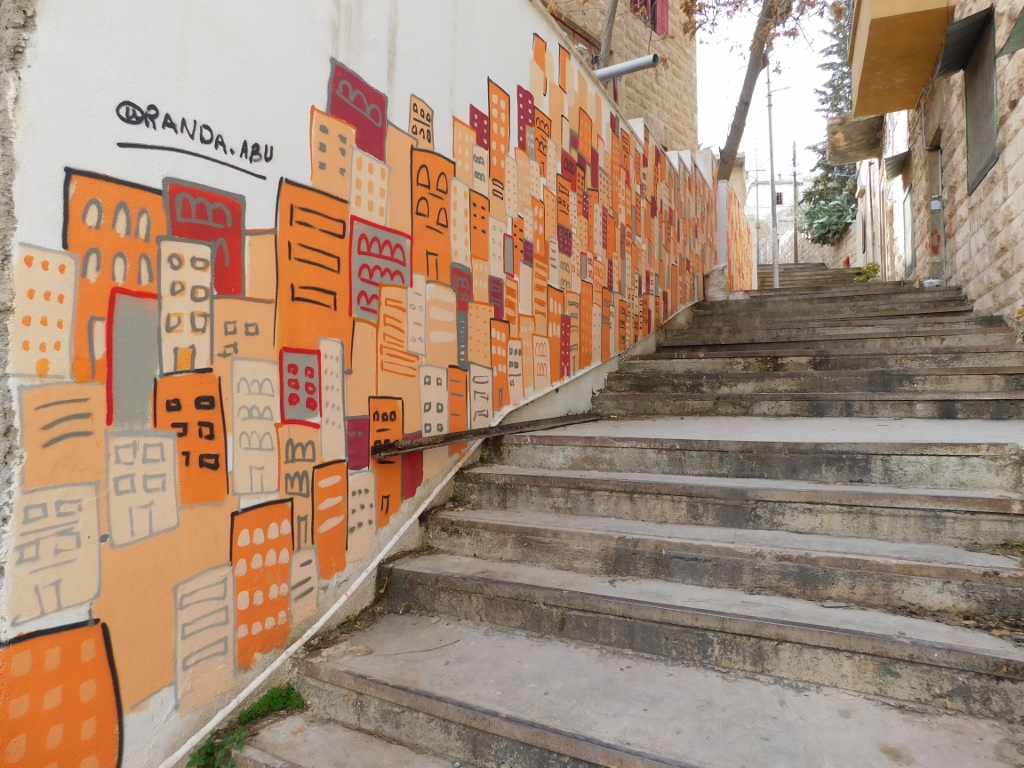 One of the staircases in the old part of Amman
One of the staircases in the old part of Amman
There are numerous staircases like this, in different parts of the city, so later I also had an opportunity to climb them even where there were no people around. Once I would reach the top I would inevitably have to stop and catch my breath before moving on and that also provided me with a chance to turn around and look at the surroundings, as well as the stairs.
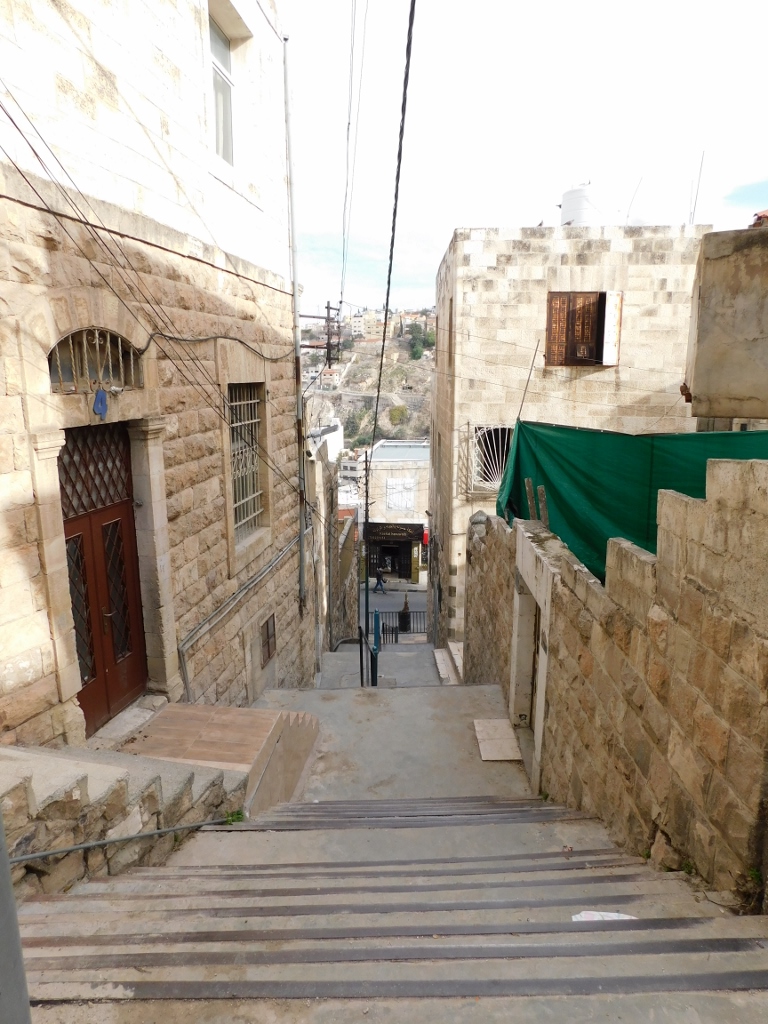 Yet another staircase in the old part of Amman (note that the bottom of the staircase is not the end of the slope)
Yet another staircase in the old part of Amman (note that the bottom of the staircase is not the end of the slope)
Still, apart from the stairs, from a couple of points I could also observe parts of old Amman, since I did ascent rather high.
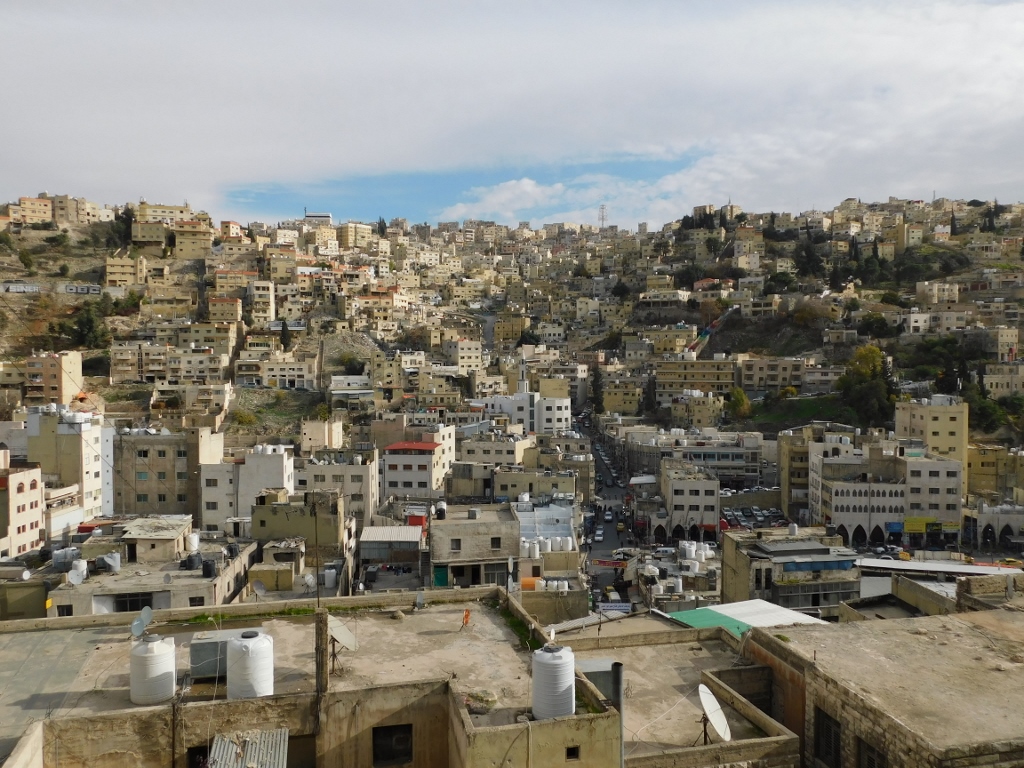 Old part of Amman
Old part of Amman
Eventually I did find that store with foreign books, but they did not have the guidebook. Then I returned to the hotel and caught a taxi there that took me to quite another part of the city where I knew for sure I could find the book. That was also a good way for me to see some more modern parts of Amman from the car. Since I was still tired from the night travel, I was too lazy to film this with my video camera, but I did notice a detail at a petrol station. I wondered why they sold kerosene at a regular station. Do airplanes stop by? Of course not, but several days later I learned that kerosene is used in some furnaces for the house heating.
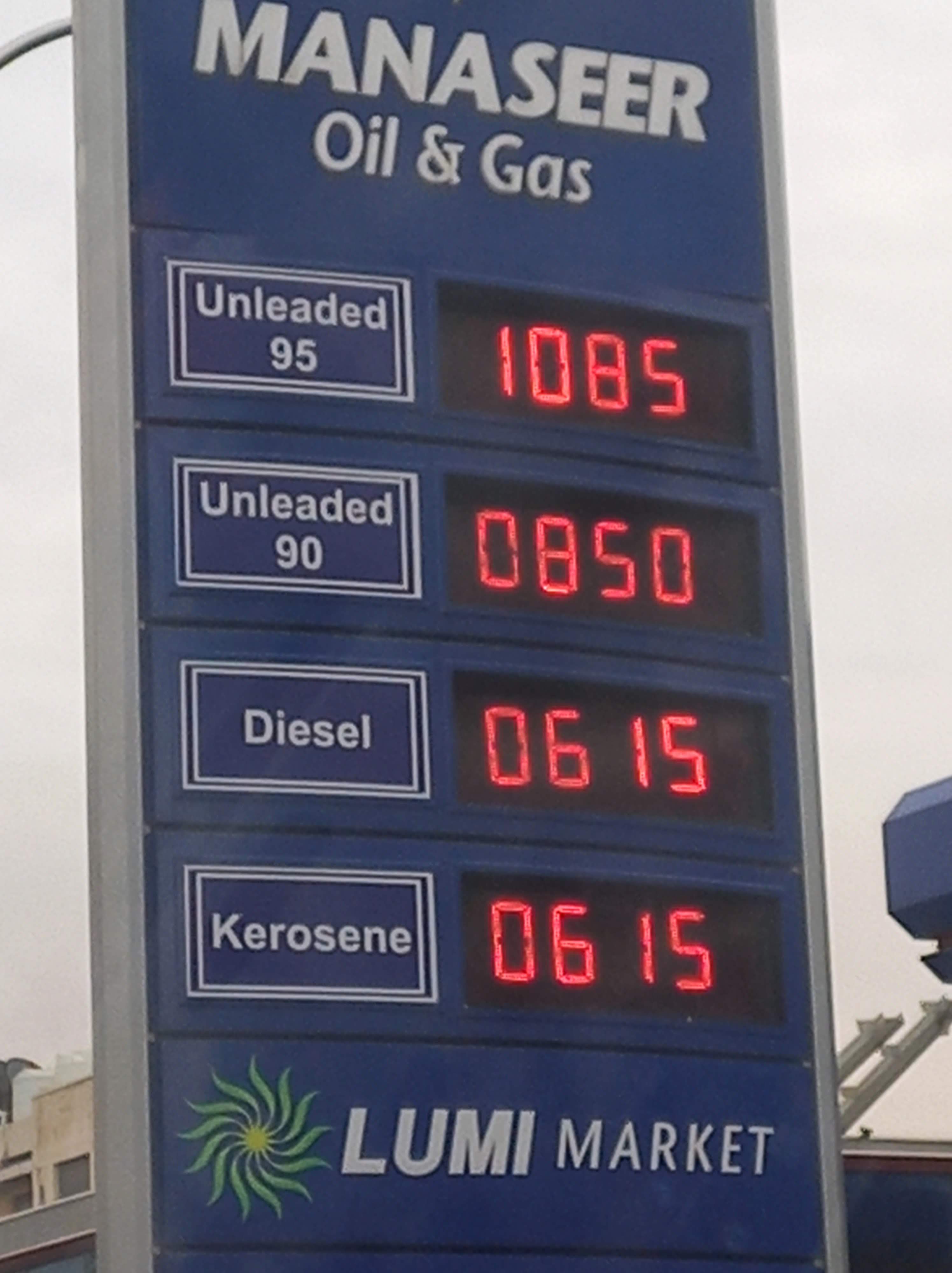 Note the last item
Note the last item
What was important for me at the moment was the fact that I finally had the guidebook in my hands and could relax.
Still, this is the point where I can mention that my stay in Jordan did have a flaw and that was that before the trip I did not buy the Jordan Pass which not only allows the entry into the country without paying for the visa, but also provides a free entrance at numerous archaeological, cultural and historic sites. This pass must be bought before entering the country; there is no other option. Although it is not inexpensive, its main advantage is that everything will cost you less once you are in the country. But, since I was overwhelmed with obligations before the trip I did not have the time to read more on the internet, the ordered guidebook did not arrive, I even had no idea of the “pass” and eventually had to pay for everything on the spot. The difference in the cumulative costs is not negligible, but there was nothing I could do now...
In any case, although I was rather tired on this first day, after I had returned to the hotel where I arranged an excursion for the day after, I realised it would be a good thing to eat something. I was not very hungry, but I wanted to have it done with so that I could go to bed very early and try to make up for the little sleep I had had the night before. It was just important that the food would be nearby.
I started from the hotel while it was still daylight. I have already mentioned that I was staying in downtown Amman and although this part of the city may seem a little shabby at first sight, it is in fact very important and absolutely worth the visit and the stay. Not only are the most important cultural and historic sites here, but there are also numerous shops offering all sorts of goods, including food, and there is also a big green market.
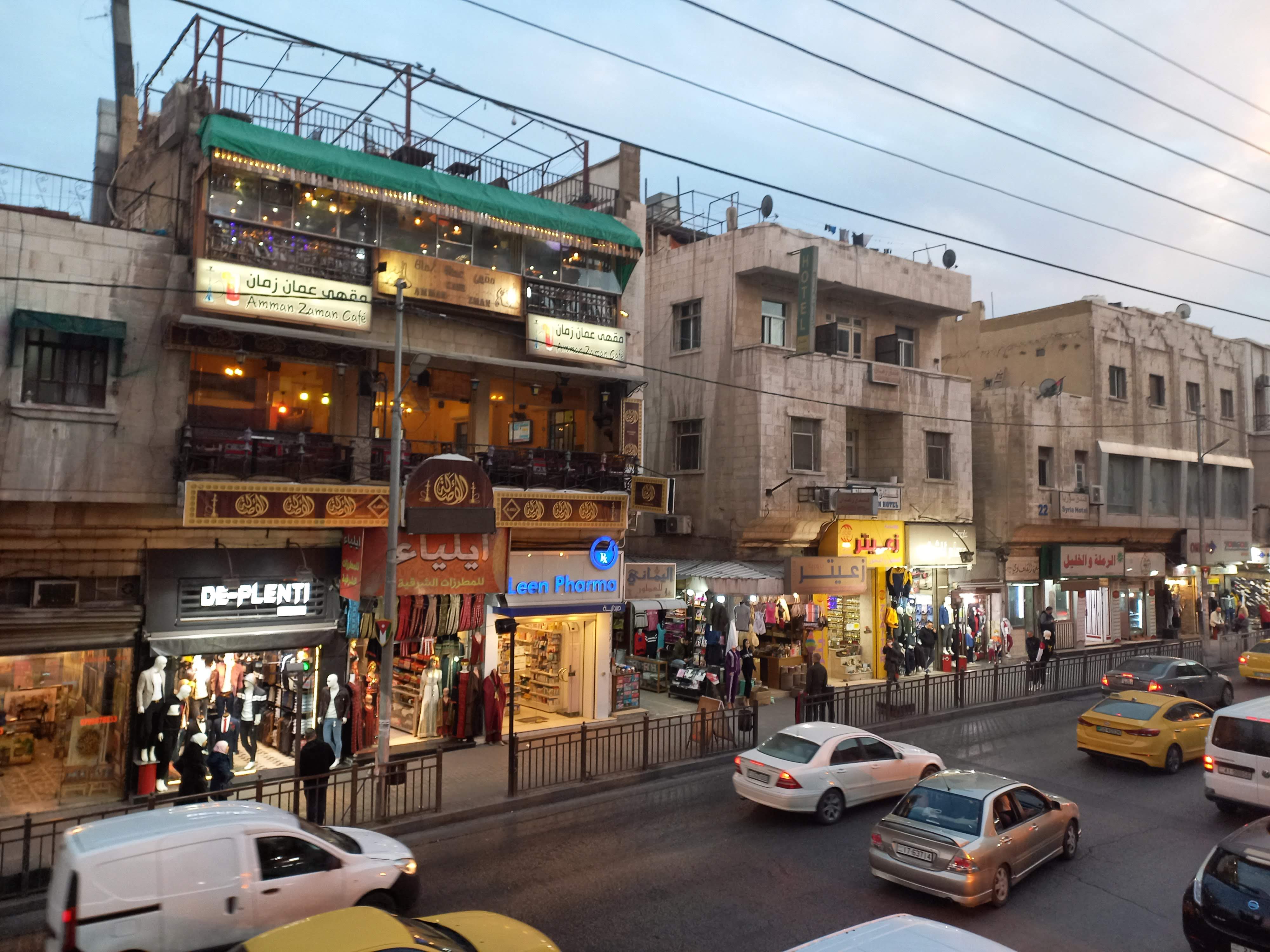 Main street in the old part of Amman
Main street in the old part of Amman
While I was looking at this part of the street, I noticed the name of a café on the other side and I found it very funny. The name of the café was Aman Zaman! Needless to say, I had to take a photo of it and forward it to some friends, as well as my brother, since our mom often used to tell us this. Namely, this expression is used in Serbia when we wonder at someone for having done or keep doing something inappropriate and this expression came into Serbian from Turkish. The synonym would, for instance, be “For heaven’s sake!” I asked the receptionist if that meant something in Arabic and he improvised saying that it could mean “old Amman” (“zaman” meaning time, age, ...), but I think that this was just his play with words, since the owners must have been aware of the Turkish expression which in fact means – Have mercy!
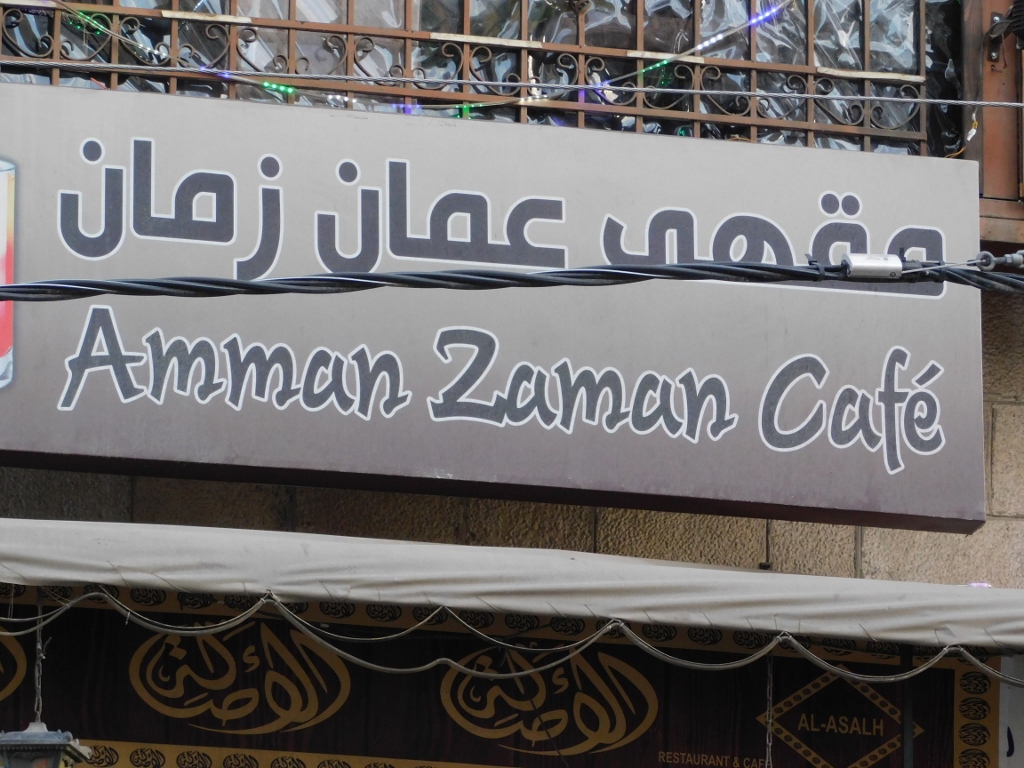 A café with an interesting name
A café with an interesting name
Having finished with photographing the café‘s name, I walked to a restaurant not far away that is a serious institution in Amman and is known by the locals from different parts of the city and from different economic strata, as well as by visitors. This was the “Hashem” restaurant, famous for its falafels. Every now and then I make falafels at home, so I wanted to check out what the “competition” was doing. Although the presentation was quite simplified, I was truly impressed by the taste. Admittedly, the waiter was not since I insisted I would eat only falafels, while he offered baba ganoush and hummus as well. I said I would take these two some other time. For the time being, however, I just wanted to nibble something, as well as get back to my room and go to bed very, very early.
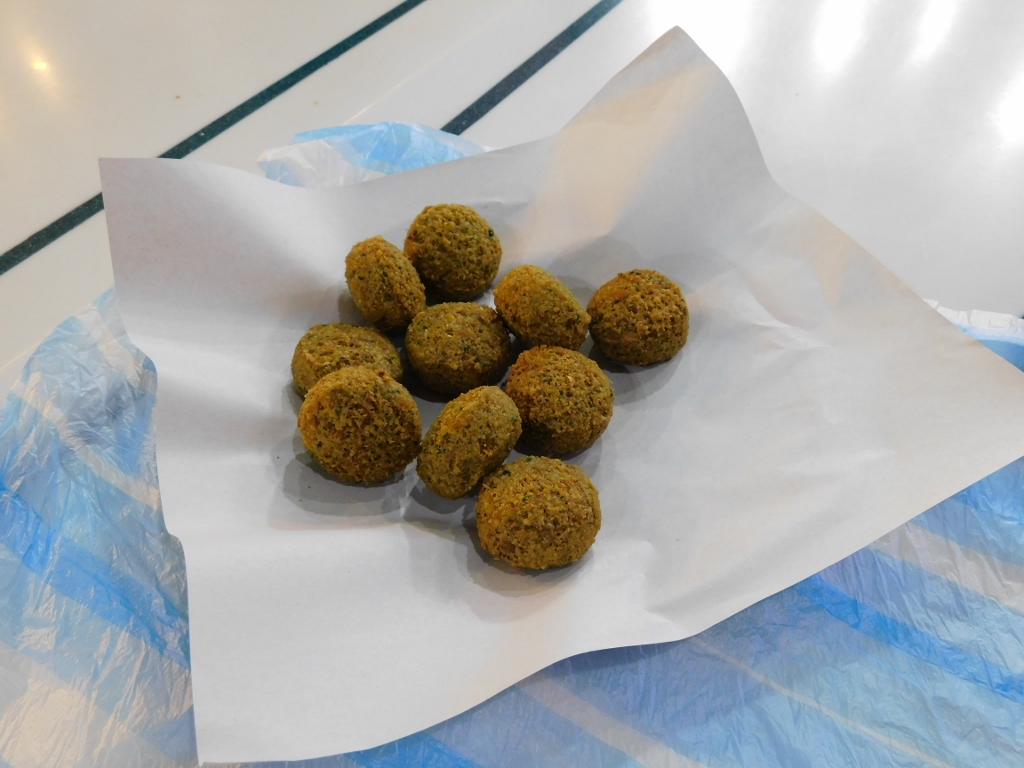 Falafels
Falafels
On my way back to the hotel I still had to stop occasionally by some shop windows. One of them was with embroidered dresses. In fact, there were several shops with such dresses in this area and I do not know to which degree they are traditional, but I concluded that they were not primarily earmarked for tourists, since in January of 2022 I saw almost no foreigners in downtown Amman. So, it would simply not pay out if somebody had such dresses for foreign visitors alone. I was certainly not interested in any shopping, but I could not help admiring them.
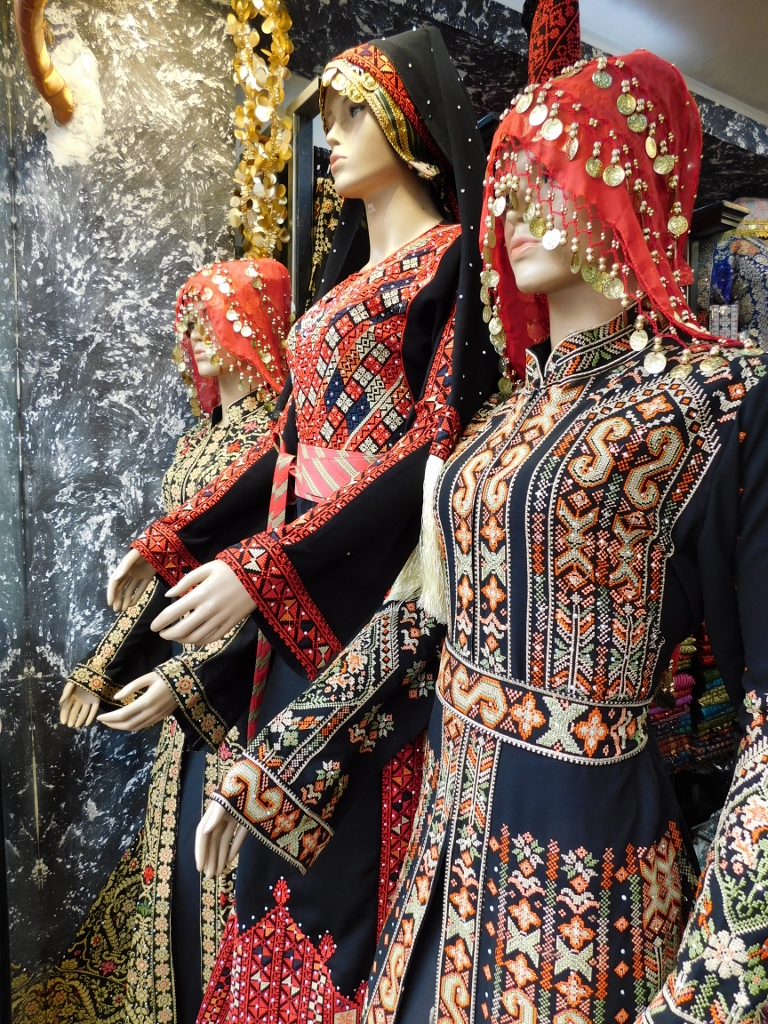 Embroidered dresses
Embroidered dresses
Another type of shop window that caught my attention this night was at a shop with spices. My plan was to buy some spices at the end of my journey, not necessarily those I took the photo of since they seemed far too complex for me and my culinary aspirations, but I certainly enjoyed in the beautiful presentation of these exotic mixtures.
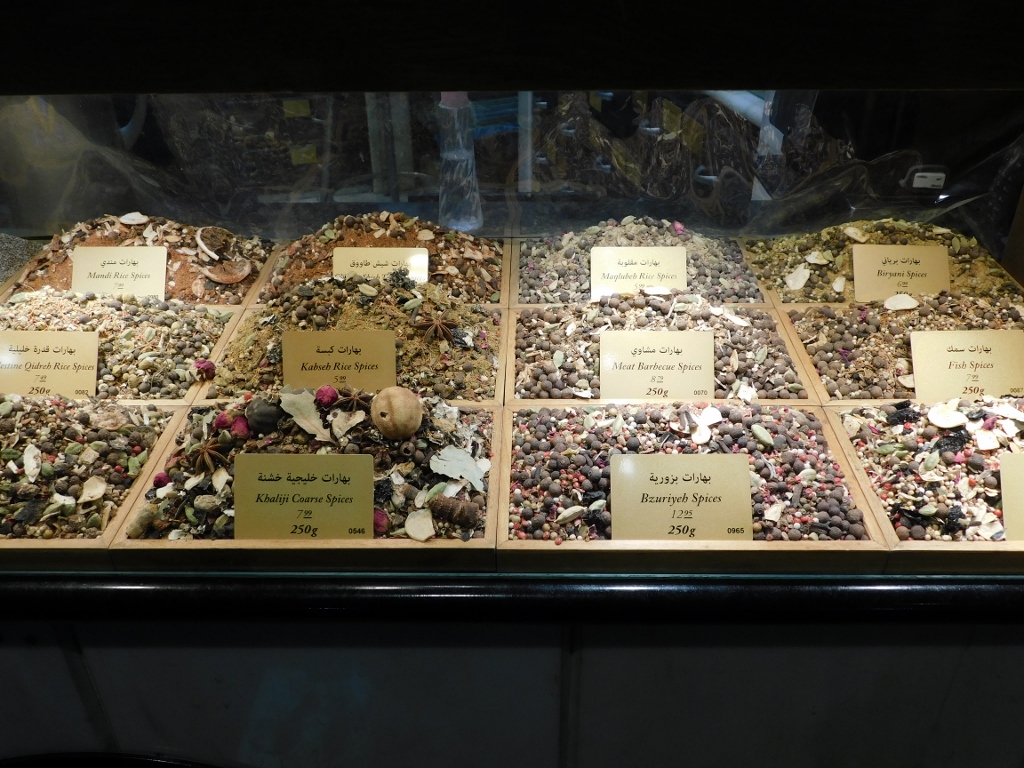 Spice shop window
Spice shop window
Now I could finally return to the hotel and go to bed. I was exceptionally tired. So much so that even the cold weather and temperature in Amman and my hotel room did not bother me and I did not turn on the air-conditioner to warm up the room a little. I just fell asleep right away.
The next morning I got up early again, since after the breakfast, at 8 o’clock, I started with my excursion. While I was still back home and without any real idea about the “situation in the field,” I imagined I would be using local transportation while travelling across Jordan and visiting what I was interested in. This is certainly not impossible, but taking into account the number of sites I wanted to visit and their distribution, such plan of mine would require me to be in the country for at least a couple of months, while I realistically had two and a half weeks. So, there had to be some adjustments to my plan on the spot.
Thus I agreed with the hotel to have private transportation for this day and this excursion. Even there I imagined I would be a part of a smaller group, but this was not really feasible, so I ended up with a car and the driver all to myself. Although this was indeed most comfortable, easy and practical, it also came at a hefty price, but it was important for me to be as little active as possible, in order to start adjusting to the local climate, the new experiences, etc. Or so I though still hoping I would be visiting Jordan using local transportation for the rest of the time. But, this issue had to be put to the side. Now, however, I will deal with the excursion I went on this day.
So, we first headed for the city of Madaba. This is the place that is situated some 30 km south-southwest of Amman. Taking into account the drive through the busy streets of Amman, it took us about an hour to reach Madaba.
This trading town has been known since the Antiquity (it was first mentioned in the Old Testament), but today it is best known for its Byzantine mosaics. The most famous among them is certainly the mosaic map of the Holy Land from the 6th century CE discovered in 1897. It is located in the Church of St George that belongs to the Greek Orthodox Church and that is often referred to simply as the Church of the Map.
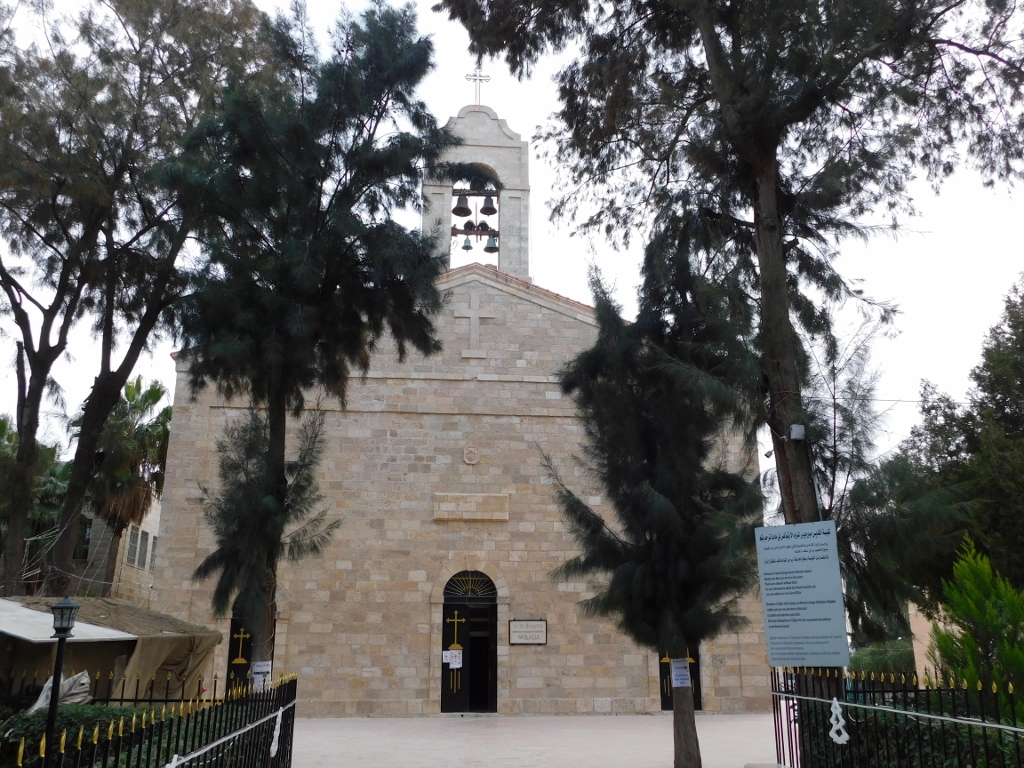 Church of St George in Madaba
Church of St George in Madaba
The church itself was built in the 19th century in such a way that it incorporated this valuable and important mosaic. The mosaic is situated on the floor and when there is a service at the church, a large carpet is used to cover the mosaic. When there is no service, however, the carpet is rolled up and the mosaic is fenced off by small poles so that the visitors would not tread on it. The naos is not large and when there is the high season there are often crowds on account of the numerous visitors who come here to see the mosaic. This is what my guidebook said. But when one visits the church in January, it may easily happen that apart from the priest and you there is nobody else at the church and then you can look at the mosaic at leisure.
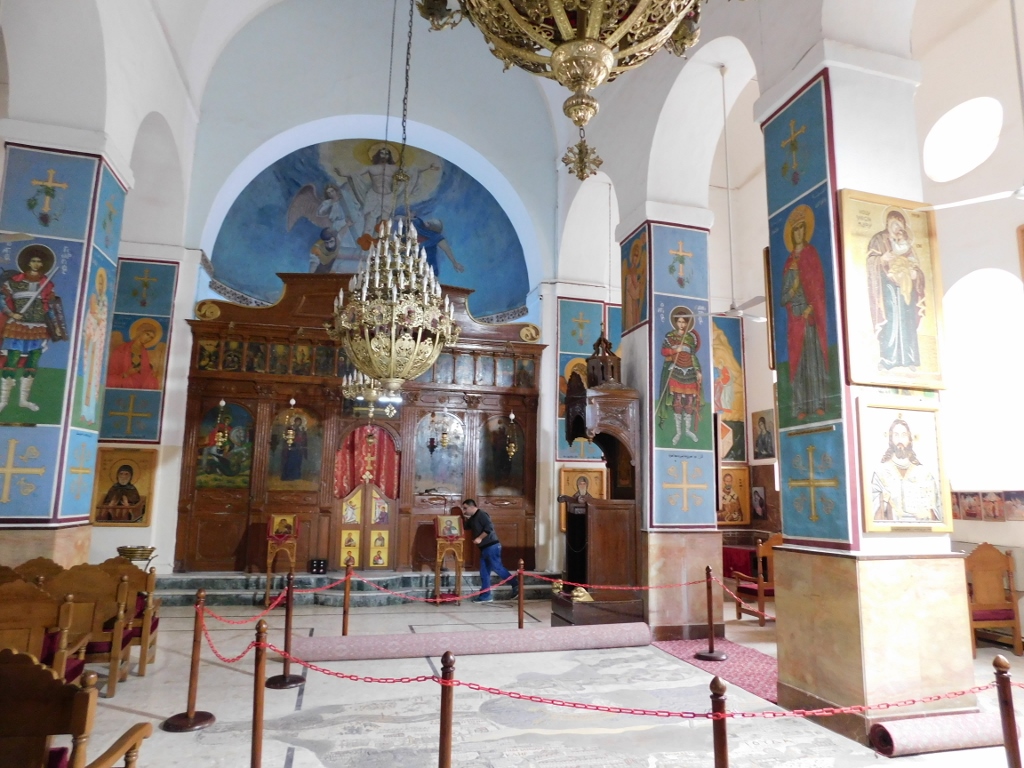 Naos of the Church of St George in Madaba in January
Naos of the Church of St George in Madaba in January
The mosaic was a part of the original Byzantine church that is believed to have been larger than the one that exists here today, since the mosaic that can be seen now is only a part of the original taking into consideration that only several fragments have survived. It is presumed that the original was almost 16 m long and 6 m wide. The mosaic shows the map of the Holy Land: from Lebanon in the north to the Nile delta in the south and from the Mediterranean Sea in the west to the desert in the east, with depictions of some geographic characteristics, as well as the names of settlements, a total of 150 of them. The experts say that in terms of cartography the map is rather accurate.
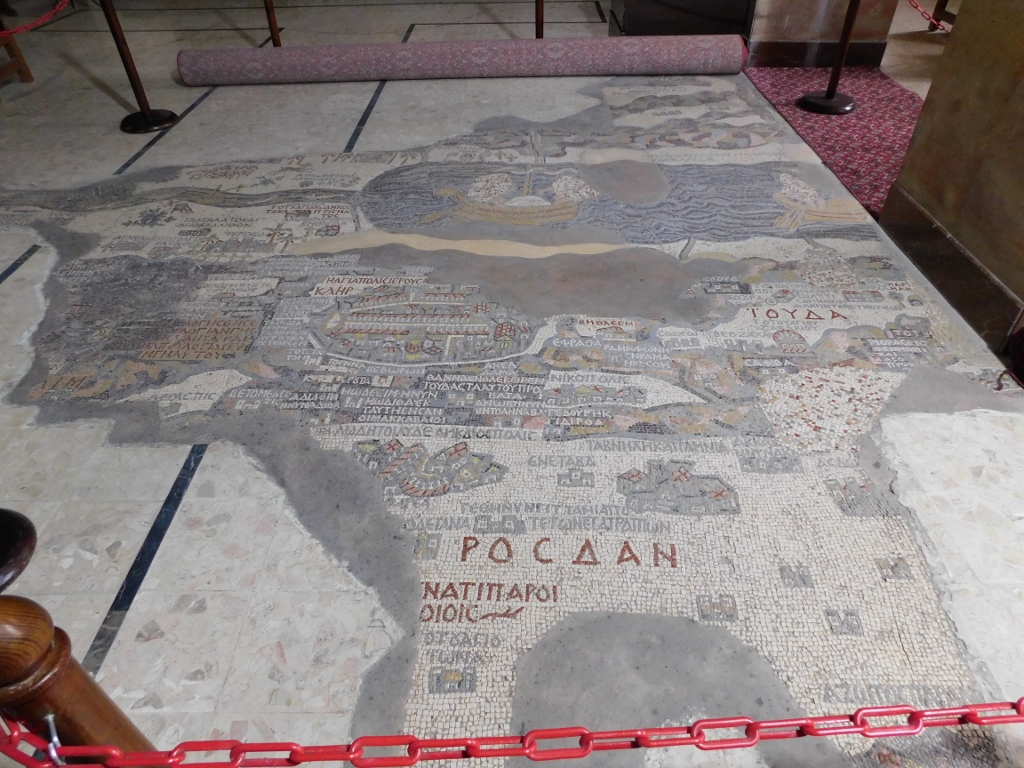 Mosaic map of the Holy Land in the Church of St. George in Madaba
Mosaic map of the Holy Land in the Church of St. George in Madaba
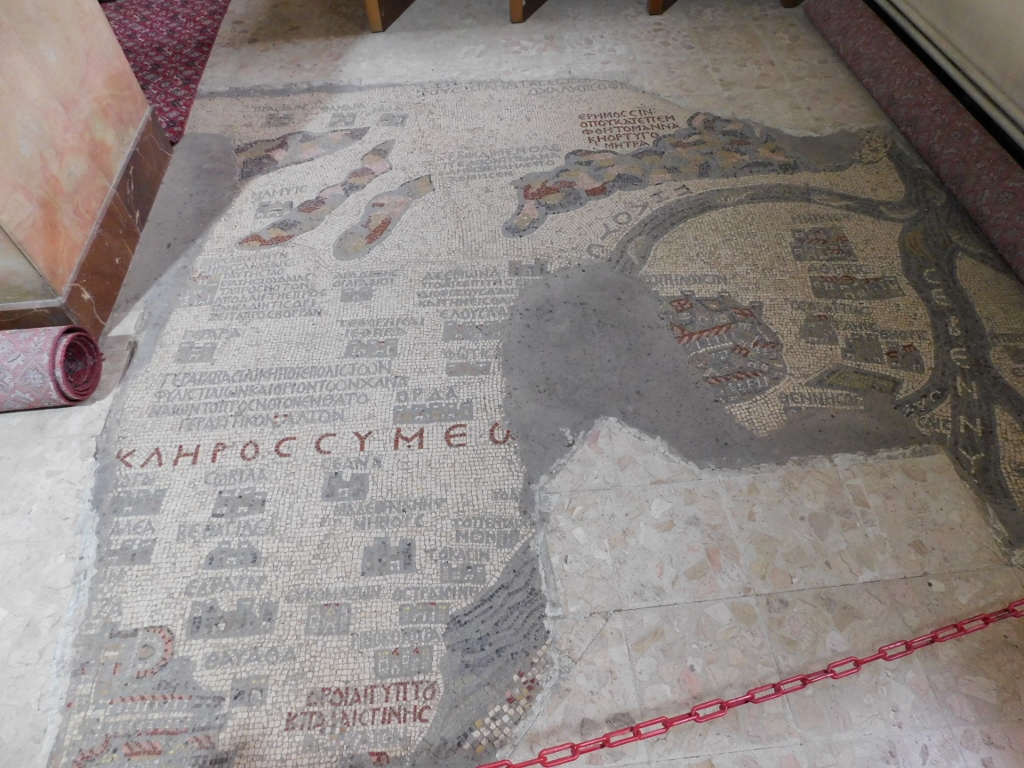 Mosaic map of the Holy Land in the Church of St. George in Madaba
Mosaic map of the Holy Land in the Church of St. George in Madaba
In the detail of the mosaic map below, in the upper section you can see a depiction of a large city. Above that depiction, more in the corner there is an inscription in red letters НАГIАПOɅIСIЕРОYСА... (The Holy City Jerusalem).
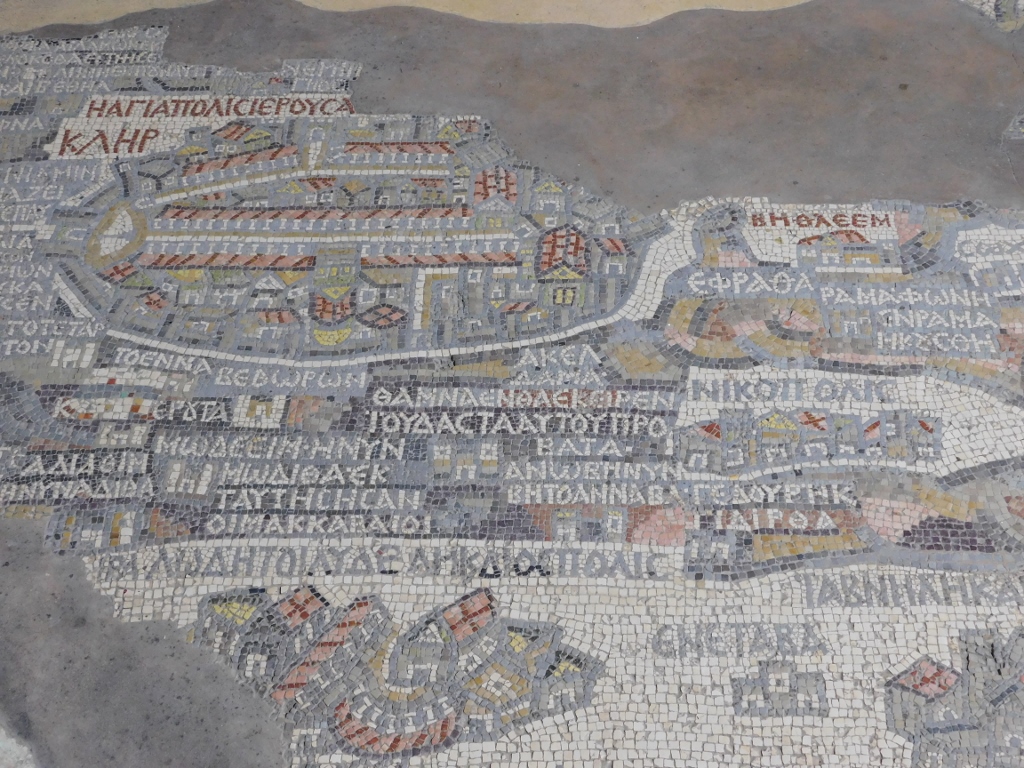 Detail of the mosaic map of the Holy Land in the Church of St. George in Madaba
Detail of the mosaic map of the Holy Land in the Church of St. George in Madaba
It was also interesting when after my return home I looked at the photos with more knowledge about present-day Jordan and the places I visited, and then I noticed in the following photo a depiction of a place I went to see later during this excursion. This concerns the site where Jesus Christ was baptised, which is clearly marked on the east bank of the river Jordan that flows into the Dead Sea (the east side is here shown on the map above, while the west side is in the map below). The inscription is seen in the upper right-hand corner, below the legs of a gazelle running away in front of a lion (in the past, lions used to live here, but they were exterminated a long time ago), written in grey letters: AINωNENƟA NYNOCAПCA ФAC. Let me not explain now what this all means, but in the photo below it can be seen that this is on the other side of the river (the Jordan) in relation to, for instance, Jericho that can easily be discerned in the map (IEPIXω).
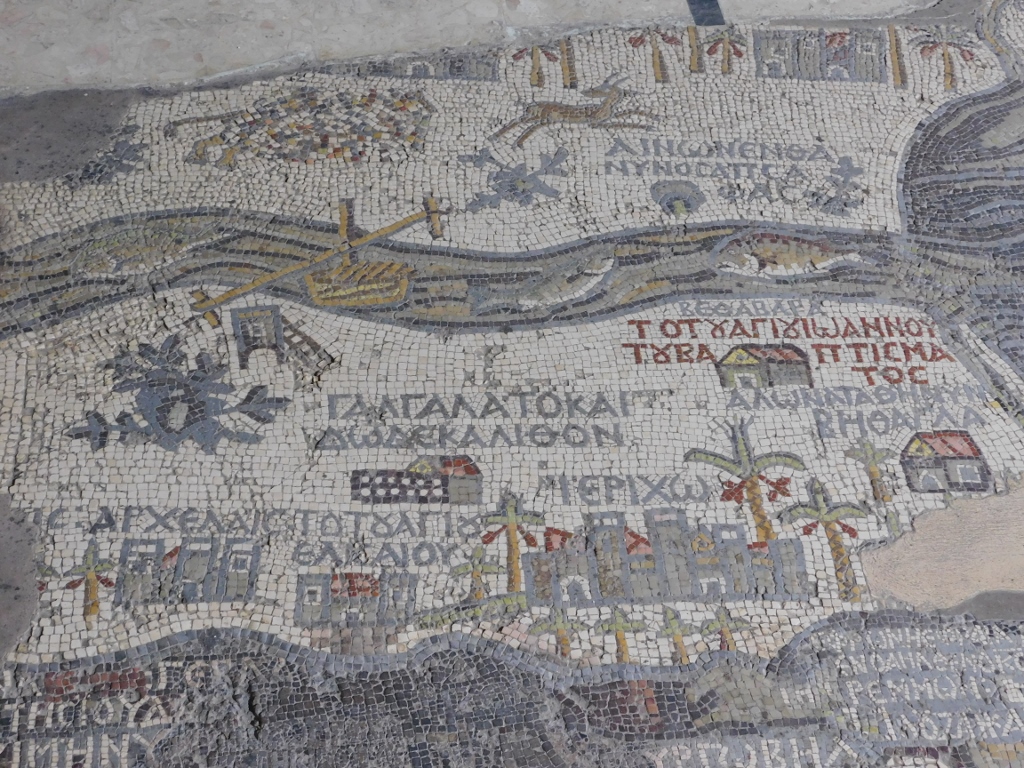 Detail of the mosaic map of the Holy Land in the Church of St. George in Madaba
Detail of the mosaic map of the Holy Land in the Church of St. George in Madaba
In addition to the fact that I was here mostly alone, so I could look at the mosaic map in peace and without any disturbances, it was also nice that I had a music background for the following video, without any human voices.
Once I had finished with the observation of the map, the sightseeing of the rest of the church and the lighting of candles, I went back to the car and agreed with the driver that I would go for a walk around the centre of Madaba, since I wanted to do some more sightseeing, and then we would meet again right there where I left him.